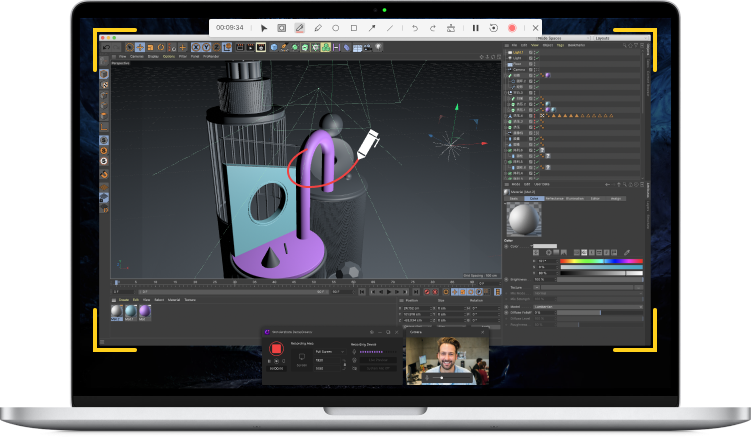Best Teaching Techniques
In this health crisis, kids need some semblance of normalcy. A school program customized to suit their requirements could be something that they can look forward to. The pandemic has significantly disturbed the higher education sector as well, which is a critical factor of a country’s economic future. Hence, different teaching methods are implemented all over the world in order to keep the education sector running. These methods have entirely changed the teaching technique meaning. Today, we will have a look at some of the best teaching techniques.
Flipped Classroom
One of the best teaching techniques and modern methodologies that have attained more preference in past years, Flipped Classroom is an educational method in which the conventional components of the lesson taught by the educator are reversed. The main study materials are worked on in the classroom after being reviewed by the learners at home. The primary goal of this method is to optimize time in class by dedicating it to develop cooperative projects, meet the special requirements of each student, or work on specific tasks.
Task-Based Method
It is one of the innovative teaching methods that aim on developing competencies and skills that learners require in their daily life. The examples of tasks can be paying the bills or booking a plane ticket. Educators must know the students' goals to build up the subjects. This method assists students succeed while accomplishing the tasks they really require.
Cooperative Learning
If you are looking for a group study method, then cooperative learning is the best teaching technology. This method is an easy way cooperative learning, a technique that educators employ to combine students together and, hence, effect on learning in a positive manner. The followers of this technique claim that working in a group enhances the involvement, attention, and acquisition of knowledge by learners. The final objective is always group-based and will be attained if each of the students performs their tasks successfully.
The primary characteristic is that it is created based on the foundation of groups of 3–6 students, where every student has a particular role and to reach the goals it is required to work and interact in a coordinated way. In cooperative learning, the final objective is always mutual and will be attained if each of the students performs their tasks successfully. However, individual learning has learners concentrating on attaining their goals without having to rely on the rest of their peers.
Creative Teaching
This type of teaching methods assists to reveal the creative capabilities of students and support their creativity. Teachers must find a method to add creative kinds of tasks in every common school subject. It will make students want to learn more about the topic. Teachers can use different visual exercises or games to enhance the creative thinking of students.
Problem-Based Learning
Problem-based learning is a recurring learning process having various stages, beginning with asking doubts and getting knowledge that, in turn, results in more questions in a developing complexity cycle. Using this methodology does not only mean the process of asking questions by learners, but converting it into helpful information and data. As per different teachers, the 4 great benefits seen with the employment of this method are:
- The enhancement of problem solving capabilities
- The improvement of creative skills and critical thinking
- Enhanced knowledge sharing in challenging scenarios
- Enhanced student motivation
Brainstorming Sessions
Teachers can classify a class into pairs, groups, or involve the entire class into a debate of a particular topic. Students feel free to express their ideas. Brainstorming learning method assists to make everybody take part in classroom activities and find out the answer to different cases together. It can also enhance the students’ communicative skills.
Thinking-Based Learning
Further than the discussion around the efficiency of learning by memorizing data and facts when talking about education, one of the most debated aspects is the requirement to show students how to work with the data they get at school. Educate them to analyze, contextualize, argue, and relate. In a nut shell, translate data into knowledge. This is the objective of thinking-based learning. The method helps in designing skills further than memorization and, while doing so, designing effective thinking on part of the learners.
Storyboard Teaching
Any data informed in the form of a story is normally best remembered. That is why employing storyboards is one of the best methods of teaching effectively. Making a storyboard assists to explain difficult topics in a simple manner due to the visualization of the story. Employing storyboards also assists to develop imagination of the students.
Project-Based Learning
With the arrival of new communication technologies and information to schools, both new teaching methods as well as new editions of existing methods, now updated and revised for the digital generation, have surfaced. One of the most employed in class currently is project-based learning. In its essence, this method lets learners to get primary skills and knowledge via the development of projects that reflects real-life issues. The teaching based on integrated or projects tasks, is today one of the best technology teaching tools for an effective development of primary skills while also getting the knowledge of the curriculum’s content.
Beginning from a concrete issue, rather than the traditional abstract and theoretical model, sees noteworthy enhancements in students’ capability of retaining knowledge as well as the chance to design complex competencies such as communication, critical thinking, problem solving, and collaboration.
Self-Learning
Students will only need to explore the subjects by themselves if they are actually interested in it. A teacher can offer learners the freedom to examine the topic. A good method to self-learning is by employing mind maps. A teacher can offer learners with the central node and allow them carry on creating a mind map with the help of their own ideas. Students communicate with one another and get an enhanced understanding of the topic.
Gamification
The addition of dynamics and game mechanics in non-ludic environments, or gamification, has been used since a long time. Over the last couple of years and specifically owing to the development of videogames, the concept has become famous, and is one of the most debated as a future and current trend of the educational industry.
Since a number of games have gained global popularity, the development of educational games has escalated consistently. Not only those focused at the general public but those particularly developed for students and specific courses. This trend was combined with the escalating inclusion of gamification in school syllabus and it is estimated that this integration will carry on growing in the coming period.
Formative Assessment
Formative assessment aims at keeping track of the students’ progress. Students enhance their learning when offered with the ongoing feedback. Students can track their pain points and find out the fields they require working on. Educators have an opportunity to enhance their teaching techniques too.
Design Thinking
Education always had scope for innovation. And educators worldwide are constantly offering new methodologies and ideas to launch in the classroom creating the best teaching techniques. Design thinking applies stem from industrial point of view and use their unique technique to solve issues and satisfy the requirements of their clients. If used in education sector, this technique makes possible to detect with greater accuracy the individual issues of every student and generate the innovation and creation in their educational experience towards the satisfaction of others.
The Desire Method
The desire method can be employed to make the learners want to hear a lecture. Teachers should show the advantages and the practical employment of this knowledge to students. For instance, the better students know coding, the more successful developer they will turn out to be. One more way to interest the students is to show how much they will lack if the educator does not offer a lecture on the subject.
Competency-Based Learning
All learning methods have the development of skills, the acquisition of knowledge, and the establishment of work habits as their primary objectives by definition. Competency-based learning represents a bunch of strategies to attain this. Via assessment tools such as rubrics, educators can go through the academic curriculum without noteworthy deviations but aiming it in a different manner, putting into practice actual examples and, hence, transmitting to their learners a more tangible version of the lessons.
Using Audio and Video Materials
Adding video and audio into the conventional learning experience will enhance the knowledge of topics for auditory and visual learners. This technique will keep learners involved and interested, as well as assist to develop imagination. One of the best ways to create video content is using Wondershare DemoCreator – an easy and handy tool to record your computer screen and webcam simultaneously and also provides many editing features.

The All-in-One Screen Recorder & Video Editor
- Record desktop screen,audio and webcam simultaneously
- Edit videos quickly with a wide range of professional tools
- Built-in plentiful video effects
- Export to MP4, MOV, MKV, GIF and multiple formats
Conclusion
In simple words, the world has developed in terms of teaching methods and we just had a look at some of the best teaching techniques. With the current health crisis, employing some of the abovementioned techniques can be helpful.

 Secure Download
Secure Download




